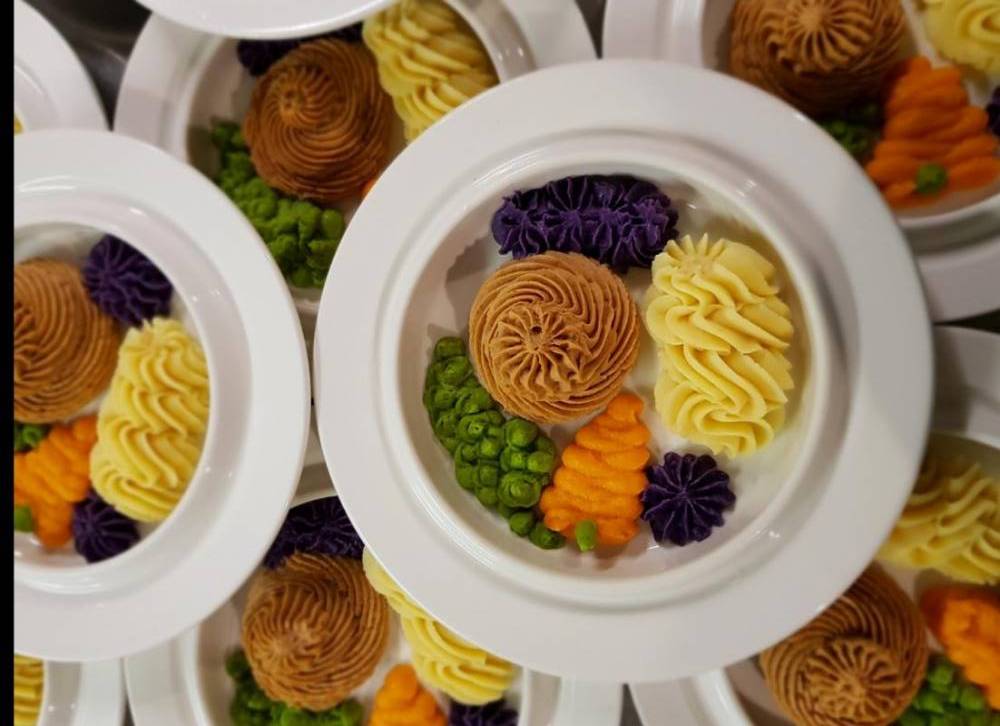
When taking into account the number of challenges that the average person will encounter in their lifetime, it’s easy to see how some of the most reliable aspects of day-to-day life can begin to be taken for granted.
Chewing and swallowing are such a rhythmic and repetitive function for the average person that the act of eating and drinking barely requires any effort or pre-planning, but like everything that we take for granted – only when a problem arises can we begin to grasp just how vital a role it actually plays in our overall well being.
The medical term for swallowing difficulties is dysphagia, and these types of issues can occur from an obstruction in the throat or oesophagus – or from a problem with swallow coordination.
Modifying foods to meet the needs of aged care residents is often treated as a chore, but the vibrant and enticing dishes being served up by aged care chef Amanda Orchard make dining for dysphagia seem more like an art form.
“I’m a big food enthusiast and presentation is vital,” said Amanda.
“Food is such an important part of a resident’s aged care experience, and we shouldn’t compromise on that just because a resident has swallowing difficulties.”
Somewhere between 40-60% of the people currently living in aged care have swallowing difficulties that could require the use of texture modified foods, but information and training to improve texture modified foods is still not a priority in most aged care kitchens.
“Resting on our laurels and doing what has always been done, is why we are seeing cuisine quality issues within the sector at the moment,” said Amanda.
“There are so many homes and kitchens out there doing amazing things, but unfortunately the information and education regarding their amazing work is not being shared with as many people as it should be.
“There are still far too many kitchens out there struggling.
“Things like variety, flavour, and the pleasure that comes from good foods are unbelievably important, and I think in the past a lot of chefs preparing texture modified foods have felt restricted when trying to provide these elements.”
Although there will always be some limits when it comes to safely preparing foods for people with swallowing difficulties, Amanda believes that a number of shortcomings stem from misinformation regarding what can and can’t be done.
“When I first entered aged care, I had two days of training with a casual chef and then I was essentially handed the keys to the kitchen, and that’s so common for those working in aged care,” said Amanda.
“Chefs and cooks in particular sometimes feel a bit lost because there is such a lack of training with texture modified foods.”
“We are often told that we cant serve things like peas and corn to a person on a level 5 or 6 texture modified diet, however, with a little bit more preparation we can actually offer these things as food options and there are a number of examples of this sort of thing.
“We have a recipe for a beetroot and cashew puree. Nuts are normally frowned upon, but we have had it assessed by a speech pathologist and it’s completely compliant for a level 4 diet.
“Good food preparation can open up a world of new flavours and variety to people living with dysphagia, and we need to be doing everything possible to make that a reality.”
The shaping and moulding of texture modified foods are a well-known part of the process, but like many, the kitchen that Amanda began working in had neither the budget or facilities for this to become a reality.
This lack of resources forced Amanda to think outside the box regarding food preparation, culminating in the exquisite culinary artistry that adorns the images in this article.
Amazingly, the food in these images was presented by using a simple piping bag, and Amanda now shares her knowledge with others through her very own public and private workshops on the tasting and plating of texture modified foods.
“Some of the people in aged care kitchens have moved over from places like the laundry and other areas, so these people need to know how to deliver good food in the simplest way possible to feel empowered to deliver quality food,” said Amanda.
“I thought, instead of complicating these processes, let’s just strip them back and stop worrying about the shape, and focus on flavour and variety, to begin with.
“Just good, honest, humble, basic-cooking that looks and tastes good – but can be done by anybody.
“If one or two people from my workshops can go back and be inspired by something that I showed them, then they can put their own spin on things and show someone else. So it’s a positive domino effect that ends with beautiful meals for residents.
“I don’t think it is possible to enjoy life without access to vibrant, beautiful food, but I do think that it’s possible to enjoy texture modified food if it is crafted with love, flavour, and variety.”
How do you make sure that homes with dementia patients that they are getting the proper food?
Be there at mealtime for a month.